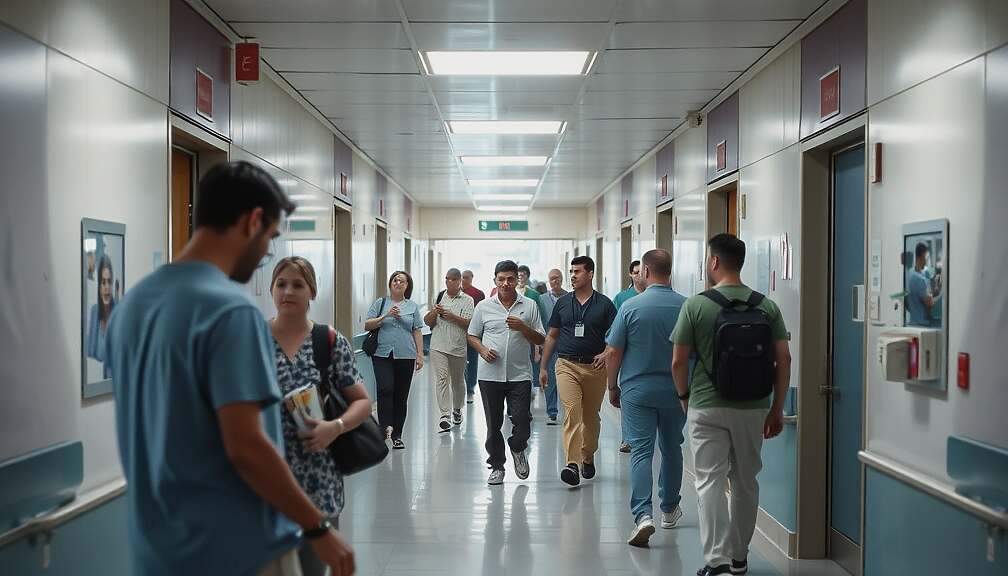Germany’s healthcare system faces a complex interplay of rising patient numbers, persistent deficits compared to pre-pandemic levels and ongoing structural challenges, according to newly released data from the Federal Statistical Office (Destatis). While the number of patients treated in German hospitals rose by 2.0 percent in 2024, reaching approximately 17.5 million – an increase of 344,300 compared to the previous year – hospital admissions remain significantly below those recorded in 2019, before the COVID-19 pandemic, falling by 9.6 percent or roughly 1.9 million cases.
This shortfall isn’t confined to specific medical fields, indicating a broad systemic issue rather than a localized problem. The overall reduction in hospital utilization raises questions about access to care and the impact of pandemic-era disruptions, potentially compounded by broader economic pressures and demographic shifts.
The availability of hospital beds has also diminished. Despite a slight increase in occupancy rates to 72.0 percent, the total number of beds across Germany’s 1,841 hospitals has decreased, standing at an average of 472,900, well below the 77.2 percent occupancy rate recorded in 2019. The data highlights a growing strain on existing resources.
The structure of hospital ownership further complicates the picture. Publicly owned hospitals account for the largest share of beds (46.8%), followed by non-profit institutions (32.3%). However, privately owned hospitals, while the most numerous (738 institutions), contribute only 20.9 percent of the total bed capacity, indicating a trend towards smaller, privately managed facilities. This disparity raises concerns about equitable access to specialized care and the potential for increased reliance on a smaller number of larger, public or non-profit hospitals.
The average length of hospital stays continues to shorten, averaging 7.1 days in 2024 – a decline from the 14.0-day average recorded in 1991. While proponents may view this as an efficiency gain, critics suggest it could indicate rushed discharges and insufficient attention to patient recovery, particularly within specialized areas like geriatric care (15.1 days) and psychiatric services (24.5 to 46.8 days) where more prolonged care is often required.
On a positive note, there has been a measurable increase in hospital staffing, with a 2.7 percent rise in physicians and a 3.3 percent increase in non-physician staff overall. Nursing staff continue to represent the largest single workforce component, employing 553,400 individuals. Remarkably, the total number of hospital employees, measured in full-time equivalents, has surpassed one million for the first time since data collection began in 1991, signaling a significant investment in human resources. However, the ongoing challenges related to staffing shortages and burnout within the nursing profession remain a critical concern for the sustainability of the German healthcare system.












